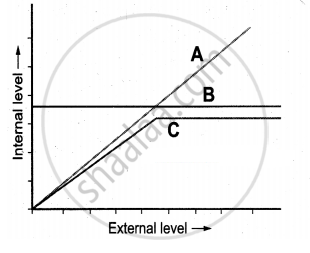Advertisements
Advertisements
Question
State how the constant internal environment is beneficial to organisms.
Solution
Homeostasis is the property of a system in which variables are regulated so that internal conditions remain stable and relatively constant. Example of homeostasis includes the regulation of temperature and the balance between acidity and alkalinity. It is the process which maintains the stability of the human body’s internal environment in response to changes in external conditions.
APPEARS IN
RELATED QUESTIONS
Give an example of an organism that enters 'diapause' and why.
Explain why very small animals are rarely found in polar region.
During a school trip to 'Rohtang Pass', one of your classmate suddenly developed 'altitude sickness'. But, she recovered after sometime.
(a) Mention one symptom to diagnose the sickness.
(b) What caused the sickness?
(c) How could she recover by herself after sometime?
Explain with the help of suitable examples the three different ways by which organisms overcome their stressful conditions lasting for short duration.
List the various abiotic environmental factors.
The figure given below is a diagrammatic representation of response of organisms to abiotic factors. What do A, B and C represent respectively.

| S. No. | A | B | C |
| a. | Conformer | Regulator | Partial Regulator |
| b. | Regulator | Partial Regulator | Conformer |
| c. | Partial Regulator | Regulator | Conformer |
| d. | Regulator | Conformer | Partial Regulator |
Which of the following is correct for r-selected species
Some organisms are able to maintain homeostasis by physical means ________.
Assertion (A): A person goes to high altitude and experiences ‘altitude sickness’ with symptoms like breathing difficulty and heart palpitations.
Reason (R): Due to low atmospheric pressure at high altitudes, the body does not get sufficient oxygen.
In the light of the above statements, choose the correct answer from the options given below.
Give one example for the following type.
Migratory animal
